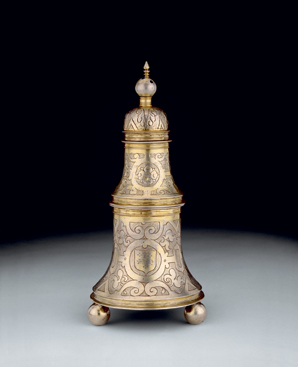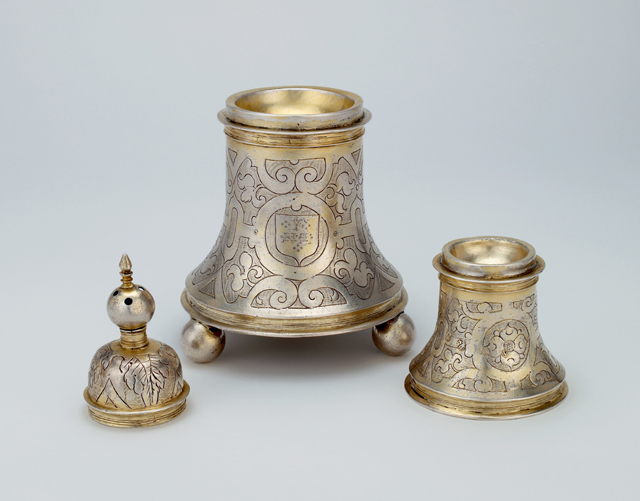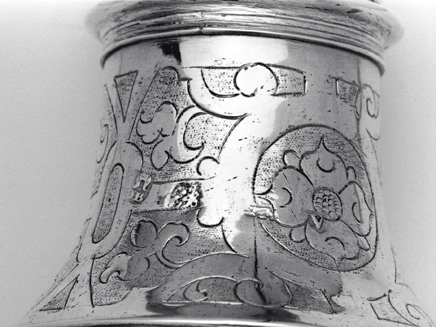Silver Collection
Browse Collection
36 of 620

Click to hide image
Bell salt
Silver, parcel-gilt
Origin: London
Date: 1597-1598
23.3 cm overall height; 10.4 cm height of lowest section; 325 g weight
Marks/Maker: London, sterling standard, 1597-8, maker's mark IB, horse shoe above
Provenance: John Dunn Gardner, sale, Christie's, 29-30 April 1902, lot 128, to Crichton; Sir Ernest Cassel; Edwina, Countess Mountbatten
Purchased through Sotheby's, 2005 (France Fund) with the assistance of the National Heritage Memorial Fund, The Art Fund, the Friends of the Ashmolean, and with the help of donations from Mrs Diane Bacon and Mrs Helen Smyth in memory of their grandfather A. H. Whiteley; WA2005.132
T. Schroder (2009), no. 113
The dignity and presence of this salt when constructed as a single object refers back to the Medieval 'great salt' and its ceremonial and symbolic status. However, when divided into parts, it foresees the purely utilitarian 'stock-salt' of the seventeenth century. This example, therefore, represents a period of transition in the development of the salt. The term 'bell salt' usually refers to a distinctive type of salt cellar characterized, like this example, by a tripartite construction of two salt cellars and a pepper box. It seems to have been one of the commoner types of late Tudor and early Jacobean decorated plate. The decoration on this example is typical of the genre. The triangulated initials Y above HI are marks of ownership. This bell salt, together with the ewer and basin (WA2005.131) were part of an important silver collection formed by Sir Ernest Cassel (1852-1921). Cassel was a German immigrant who reportedly arrived in England at the age of 17 with no more than a bag of clothes and a violin. Within fifteen years he was one of the most prominent financiers in Europe, contributing hugely to Britain's prosperity prior to the First World War. He was made private financial advisor and treasurer to King Edward VII in 1902.
Information derived from T. Schroder, British and Continental Gold and Silver in the Ashmolean (2009)

|
Other Images

Click to hide image

Click to hide image

Click to hide image

|

|

|

.jpg)
